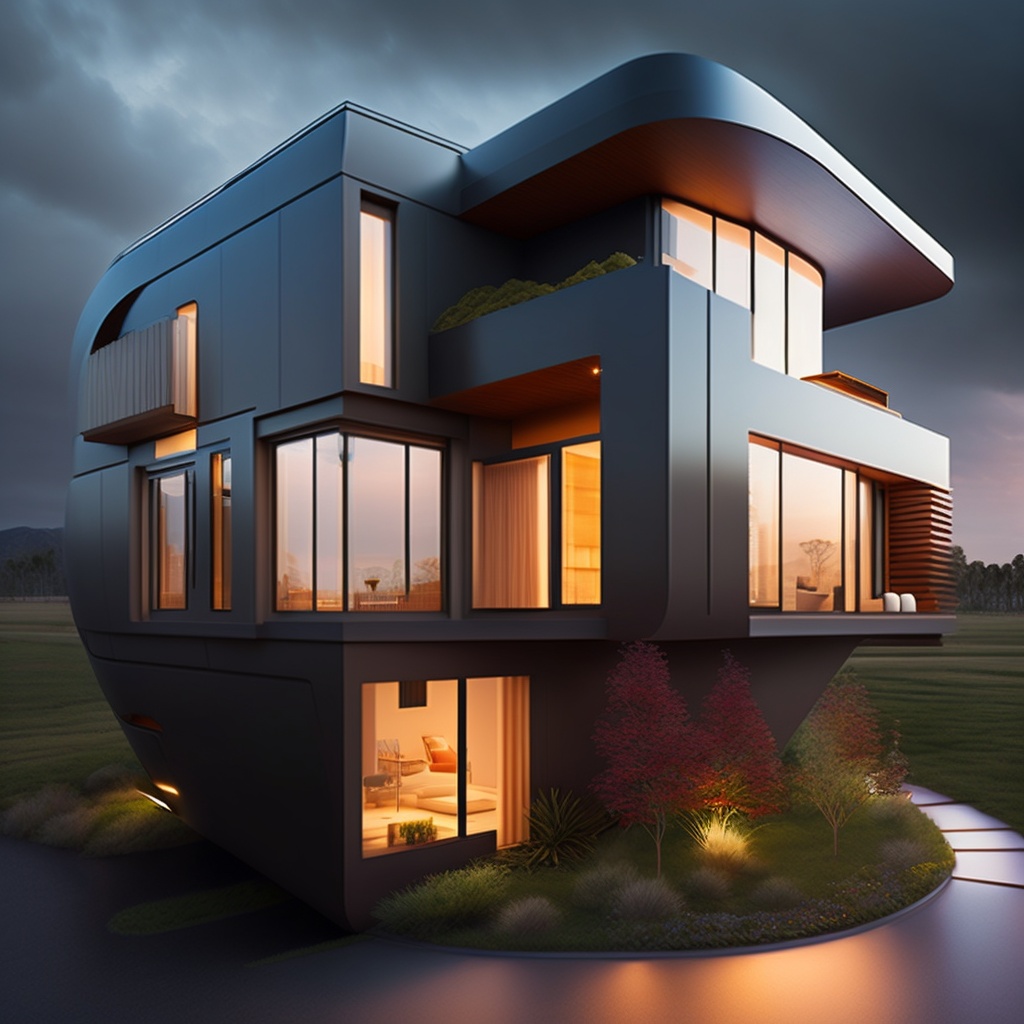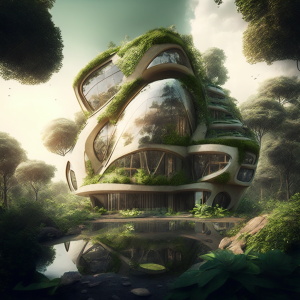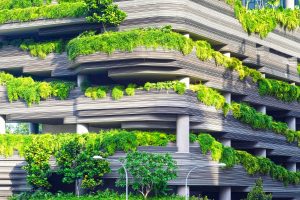Introduction to Self-Sustainable Homes
Self Sustainable Homes? What the heck are they? Ever dreamed of living off the grid but love binge-watching your favorite shows too much to cut the cord? Welcome to the world of self sustainable homes, where that dream is a practical reality. Hold onto your eco-friendly hats because we’re going on a sustainable adventure!
What Are Self-Sustainable Homes?
No, self-sustainable homes are not futuristic sci-fi pods (though that would be cool), but they might as well be considering how advanced they are.
Definition and Basics
Self-sustainable homes are like the Swiss Army knives of dwellings, packed with tools to help you live independently. They produce their energy, manage water, and minimize waste, leaving only smiles and a green glow of pride.
History and Evolution
Think this is all space-age stuff? Think again! Humans have been dabbling in sustainable living for centuries. From ancient cave dwellings to modern marvels, self-sustainable homes have been part of our story. Now, with advanced technology, they’re accessible to all. It’s like going from a flip phone to a smartphone in housing terms.
Types and Models
There’s no one-size-fits-all here. From compact city apartments to sprawling country estates, there’s a self-sustainable home for everyone. Want solar panels? You got it. Wind turbine? Why not? Greywater system? Now you’re speaking our language!
Why Are Self Sustainable Homes Important?
Curious why these aren’t just a fad for the bearded, flannel-wearing crowd? Here’s why:
Environmental Benefits
Reduce, Reuse, Recycle isn’t just for school posters; it’s a way of life in self sustainable homes. Reduce the strain on resources, reuse water, and recycle waste, all while giving the planet a well-deserved hug.
Financial Advantages
Yes, self-sustainable homes are like having a piggy bank that pays you back. Initial investments might make you wince, but long-term savings will make you dance. Imagine never paying a water or electricity bill again. Feeling the groove yet?
Personal Satisfaction and Growth
Build it, live it, love it. Taking charge of your living environment gives a sense of achievement that’s as satisfying as finally mastering that sourdough bread recipe. Plus, it’s a constant learning process – you’ll become the neighborhood guru in no time.
Community and Global Impact
Think one home won’t make a difference? Multiply that by thousands, and you’ve got a movement. Self sustainable homes are part of a growing trend towards responsible living, making communities stronger and the world a better place.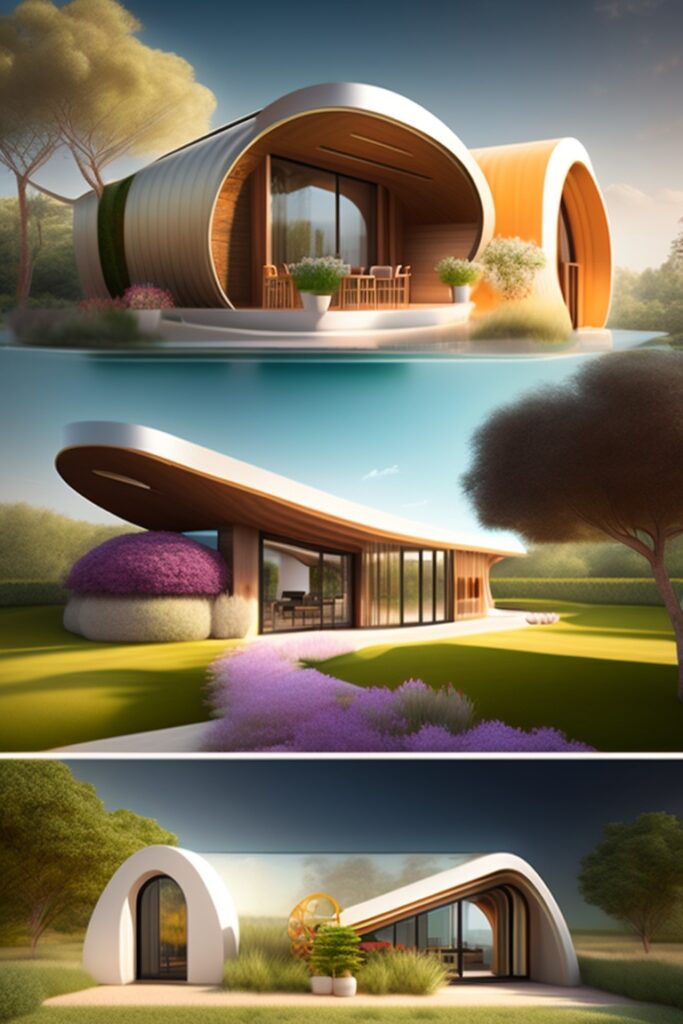
The Pillars of Self Sustainable Homes
Self-sustainable homes aren’t just architectural wonders; they’re a testament to human ingenuity and our commitment to coexisting harmoniously with our planet. By integrating technology with natural processes, self-sustainable homes epitomize the future of green living. Let’s dive deeper into what makes these homes the epitome of sustainable living, ensuring “self sustainable homes” remain at the forefront of our discussion.
Mastery of Energy Management
Being energy independent is one of the cornerstones of self sustainable homes:
Solar Panels
- Mechanism: Think of solar panels as diligent workers, ceaselessly capturing sunbeams and converting them into usable power. Their photovoltaic cells absorb sunlight and generate electricity, feeding your home’s energy needs.
- Benefits: Apart from slashing electricity bills, solar panels champion the cause of green energy. Imagine, zero greenhouse gas emissions and a near-absent utility bill.
- Challenges: Geographic location and seasonal variations can affect the energy yield. However, advances in technology are continually improving their efficiency and storage capabilities.
Wind Turbines
- Mechanism: Much like a reverse fan, wind turbines capture the kinetic energy of the wind, converting it into electricity.
- Benefits: Especially beneficial in windy regions, these turbines serve as reliable power generators, further diminishing reliance on fossil fuels.
- Challenges: Their efficiency is subject to wind consistency, and there’s a need to ensure they’re installed in locations with minimal bird activity to prevent any ecological disturbances.
Holistic Water Solutions
Self sustainable homes take water management to the next level:
Rainwater Harvesting
- Mechanism: Customized systems collect rainwater from rooftops, guiding it through a filtration process, making it ready for home use.
- Benefits: Decreases dependency on municipal water sources and reduces stormwater runoff, mitigating the risk of erosion and flooding.
- Challenges: Areas with sporadic rainfall might need larger storage capacities or supplementary water sources.
Greywater Recycling
- Mechanism: Water from household chores is redirected, treated, and repurposed for non-potable tasks like irrigation or toilet flushing.
- Benefits: It dramatically reduces water wastage and decreases the strain on sewage systems and treatment plants.
- Challenges: Systems must be meticulously designed to ensure non-contamination of potable water sources and to maintain hygiene standards.
Innovative Waste Solutions
A core feature of self sustainable homes is their approach to minimizing waste:
Composting
- Mechanism: Organic waste undergoes a decomposition process, turning into nutrient-rich compost. This microbial magic is facilitated by conditions that encourage the breakdown of waste.
- Benefits: It reduces the need for chemical fertilizers, promotes healthy plant growth, and ensures organic waste is recycled efficiently.
- Challenges: Managing the balance of greens (nitrogen-rich) and browns (carbon-rich) is essential for effective composting.
Recycling
- Mechanism: Differentiating recyclables from trash ensures they’re processed and transformed into new products.
- Benefits: Conservation of resources, energy saving, and reducing the strain on landfills.
- Challenges: Effective recycling demands awareness and a proactive approach to segregating waste correctly.
In essence, self sustainable homes are more than just houses; they are living, breathing entities symbiotically tied to their environment. Every feature, from energy to waste management, is meticulously crafted, ensuring minimal ecological impact. By living in such homes, we don’t just reduce our carbon footprint; we tread lightly, ensuring a healthier planet for future generations.

How to Build a Self-Sustainable Home
Building self-sustainable homes isn’t like assembling IKEA furniture – there’s no mysterious leftover screw to contend with. It’s an intricate process filled with opportunities to align your living space with your values. Here’s the step-by-step guide to get you there:
Step 1: Planning and Design
- Understanding Your Needs
- Identify Your Goals: Whether you’re a complete greenhorn or an eco-warrior, knowing what you want helps in designing your perfect self-sustaining home.
- Budget Considerations: Think of your budget as your personal financial puzzle, with each piece fitting neatly to create a masterpiece.
- Hiring Professionals
- Finding the Right Team: Architects, engineers, or wizards – whoever you need to make your dream home a reality.
- Consultations and Preparations: Collaborate with the pros, and don’t be afraid to ask questions. They’re not mind readers, after all.
- Choosing the Location
- Understanding the Landscape: Different terrains require different approaches. You wouldn’t build a sandcastle in a rainforest, would you?
- Local Regulations and Permits: Befriend the local authorities and regulations, or you might find yourself in a bureaucratic pickle.
Step 2: Construction and Implementation
- Building the Structure
- Selecting Materials: Sustainable materials are like the ingredients in a gourmet meal – choose wisely, and you’re halfway to delicious.
- Construction Techniques: Like baking a cake, but with concrete, wood, and a tad more sweat.
- Installing Energy Systems
- Solar, Wind, or Both: Think of this as your home’s heartbeat, keeping everything alive and kicking.
- Connection and Storage: Storing energy for a rainy day is no joke; it’s serious business (with some serious batteries).
- Setting Up Water and Waste Systems
- Water Collection and Recycling: This isn’t your average plumbing job. It’s more like crafting a water symphony.
- Waste Management Solutions: Turning trash into treasure isn’t just for pirates. Arrr, composting ahoy!
Step 3: Maintenance and Adaptation
- Regular Check-ups
- Monitoring Systems: Keeping an eye on things ensures that your home continues to run like a well-oiled bicycle.
- Seasonal Adjustments: Seasons change, and so should some of your practices. Sun hat in summer, scarf in winter!
- Ongoing Education
- Learning and Growing: Building a self-sustaining home is like adopting a pet; it’s a lifelong commitment with continuous learning.
- Community Engagement: Share your wisdom, learn from others, and become part of the self-sustaining tribe.
Building self sustainable homes is not just a construction project; it’s an artistic endeavor where science, nature, and creativity meet. Whether you’re a DIY enthusiast or someone who prefers to leave it to the pros, these steps will guide you on a journey that’s not just about erecting walls and roofs but building a sustainable future. It’s time to roll up those sleeves and build a home that doesn’t just shelter but nourishes the soul and the planet.
The Future of Self-Sustainable Homes: A Glimpse into Tomorrow
The realm of self-sustainable homes isn’t just a current fascination; it’s an evolving field with endless possibilities. So grab your crystal ball or futuristic glasses, and let’s peek into what the future might hold for these earth-loving abodes.
Technological Innovations
- Artificial Intelligence (AI) Integration
- What to Expect: Imagine a house that learns from you, like a pet that doesn’t shed! AI can optimize energy usage, automate garden care, and even remind you to take out the compost.
- Challenges: Privacy concerns and initial costs may need a technological wand-wave to mitigate.
- Energy Storage Breakthroughs
- What to Expect: Batteries so efficient, they make your old phone battery look like a relic from the Stone Age. Storing renewable energy could become as easy as storing leftovers.
- Challenges: Developing new materials and scaling production will be like solving a thrilling but complex puzzle.
Architectural Advances
- Modular and Prefabricated Homes
- What to Expect: Think LEGO, but for houses. Pre-designed and fabricated modules could make building self-sustainable homes as easy as following a recipe… with fewer burnt cookies.
- Challenges: Standardization and customization might dance a delicate tango before finding the perfect rhythm.
- Biophilic Designs
- What to Expect: Homes that don’t just accommodate nature but embrace it, like a tree-hugging bear. Indoor gardens, natural ventilation, and living walls could be the norm.
- Challenges: Balancing aesthetics, practicality, and maintenance might require some creative gardening gloves.
Social and Economic Shifts
- Community-based Living
- What to Expect: Self-sustaining neighborhoods where sharing becomes caring. Shared solar grids, community gardens, and a sense of camaraderie could redefine suburban life.
- Challenges: Creating community guidelines and fostering collaboration might take more than just a neighborhood BBQ.
- Affordable Sustainability
- What to Expect: Self-sustainable homes for all! As technologies mature and policies align, these homes could become as common as dad jokes at a BBQ.
- Challenges: Balancing affordability with quality will be like walking a green, but tight, rope.
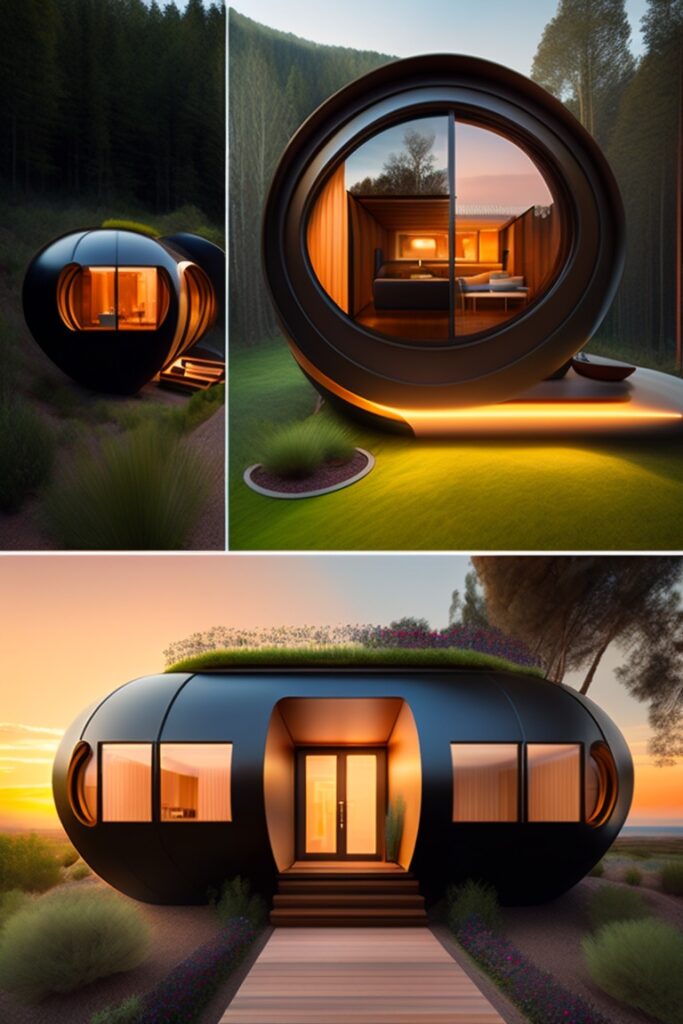
A Home for Every Dream
The future of self-sustainable homes is as bright and promising as a sunrise on a solar farm. These advances are not merely predictions but tangible pathways to a future where self-sustaining isn’t an elite choice but a feasible reality for many.
So, buckle up, eco-enthusiasts, because the journey towards self-sustainable living is not only exciting; it’s a sign of hope, innovation, and a testament to human ingenuity. Whether you’re dreaming of a high-tech haven or a nature-infused nest, the future is a wide-open door, waiting for you to step through.
The future is not just self-sustaining; it’s self-inspiring. Let’s build it together, one eco-brick at a time. The future of self-sustainable homes is filled with exciting technological advances, innovative design approaches, and promising social shifts. The future possibilities align with a vision of sustainability that extends beyond individual homes and embraces community and inclusivity, setting the stage for a world where living in harmony with nature is not just a dream but a tangible reality.
Self Sustainable Homes: Your Own Declaration of Independence
Building and living in a self-sustainable home is not merely a choice; it’s a meaningful declaration of independence and harmony with the environment. It’s a step beyond the traditional and mundane into a world where every wall echoes sustainability, every window frames responsibility, and every door opens to innovation.
But this journey isn’t a solitary walk through an eco-friendly garden. It’s filled with collaboration, creativity, and a connection to a community driven by the same ideals. You’ll discover new ways of thinking, break the conventional molds of living, and literally build a path that others may choose to follow.
Embracing Sustainability as a Lifestyle
Self-sustainable homes reflect a lifestyle that doesn’t just nod to eco-friendliness but fully embraces it. From energy creation to waste reduction, every feature becomes a reminder of the potential we have to live in harmony with our surroundings. It’s like turning your home into a thriving, living organism that contributes to the world, rather than taking from it.
Challenges, Triumphs, and Continuous Growth
Make no mistake; there will be challenges. Sometimes the wind won’t blow, and the sun won’t shine, but that’s part of the adventure. Overcoming these obstacles and adapting to changes will become triumphs that build character, resilience, and a sense of achievement.
It’s not a static process; it’s a continuous evolution. Just like tending a garden, your understanding and techniques will grow and blossom. You’ll become not just a homeowner but a steward of the earth, nourishing it as it nourishes you.
A Path Forward
Self-sustainable homes are not an isolated trend but a sign of a shift in thinking, a movement towards a future that respects and cherishes our planet’s resources. As technology advances and awareness grows, the barriers to entry will continue to decrease, making this lifestyle accessible to many more people.
So, why not take the first step on this path? Maybe today’s curiosity will become tomorrow’s passion, leading you to a home that’s not just bricks and mortar but a living, breathing embodiment of your values and dreams. A self-sustaining home is not just a dwelling; it’s a philosophy, a commitment, and a bold statement that says, “I care.”
Now, who’s ready to turn their home into a haven for sustainability? Raise your recyclable cups, because the future is green, and it starts at your doorstep.
Conclusion
As the world grapples with the pressing challenges of climate change, dwindling resources, and environmental degradation, self-sustainable homes emerge as beacons of hope. These aren’t merely architectural marvels; they are profound declarations of our potential to coexist with nature harmoniously.
By prioritizing energy independence, holistic water solutions, and innovative waste management, self-sustainable homes champion an ethos that values both the individual and the planet. Investing in such homes isn’t just about bricks and mortar; it’s a commitment to a legacy. A legacy of leaving the world better than we found it, ensuring our children and their children inherit a planet that still buzzes with life, vitality, and potential. As the climate narrative unfolds, self-sustainable homes could very well be the scripts of redemption and rejuvenation, rewriting our relationship with the environment.
FAQs
1. How much does it cost to build self-sustainable homes?
- Building self-sustainable homes often requires a significant initial financial outlay. This is due to the integration of cutting-edge technology and eco-friendly materials. However, these costs should be viewed as an investment rather than an expense. Over time, the savings on utilities, water, and other recurring expenses can offset the initial costs. Furthermore, with the increasing availability of sustainable technologies and growing demand, prices are becoming more competitive.
2. Is it legal to build a self-sustaining home?
- The legality of building a self-sustaining home largely depends on local zoning laws, building codes, and regulations. Some regions wholeheartedly support green initiatives and might even offer incentives. However, others might have restrictions due to concerns about infrastructure, aesthetics, or other factors. It’s paramount to consult with local planning departments or legal advisors before embarking on your self-sustaining journey to ensure compliance and avoid potential legal complications.
3. Can I convert my existing home into a self-sustaining home?
- Absolutely! Retrofitting an existing home to be self-sustaining is a commendable endeavor. Start with an energy audit to identify areas of inefficiency. From there, prioritize upgrades like solar panel installations, rainwater harvesting systems, and insulation improvements. Remember, the transition doesn’t have to be overnight. Making gradual changes can spread out the costs and allow you to adjust to a more sustainable lifestyle progressively.
4. What are the main challenges of living in self-sustainable homes?
- While the rewards of living in self-sustainable homes are manifold, there are challenges. Regular maintenance of systems, like solar panels and wind turbines, is essential. There’s also a learning curve as residents familiarize themselves with the home’s technologies. Additionally, adapting to a lifestyle that’s more conscious of resource consumption can require mindset shifts. However, the sense of fulfillment derived from living in harmony with nature often outweighs these challenges.
5. Do self-sustainable homes impact property values?
- In many cases, self-sustainable homes can enhance property values. As awareness about climate change and sustainability grows, eco-friendly homes become increasingly desirable. Features like solar panels, efficient water systems, and sustainable landscaping can set properties apart in the real estate market. Moreover, potential buyers often recognize the long-term savings associated with such homes, making them willing to invest more upfront. It’s akin to buying a home that comes with a promise of reduced monthly expenses and a positive environmental impact.

